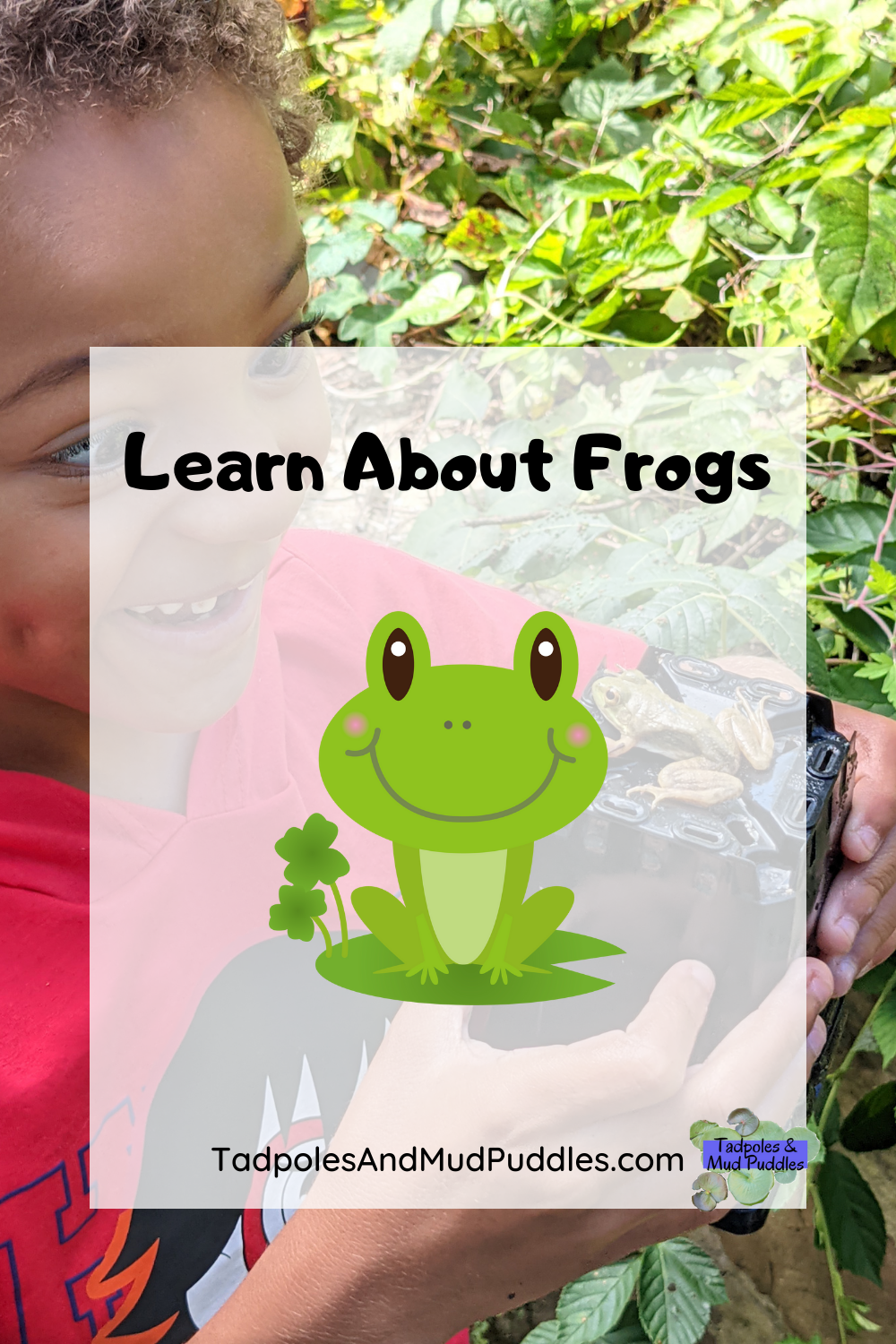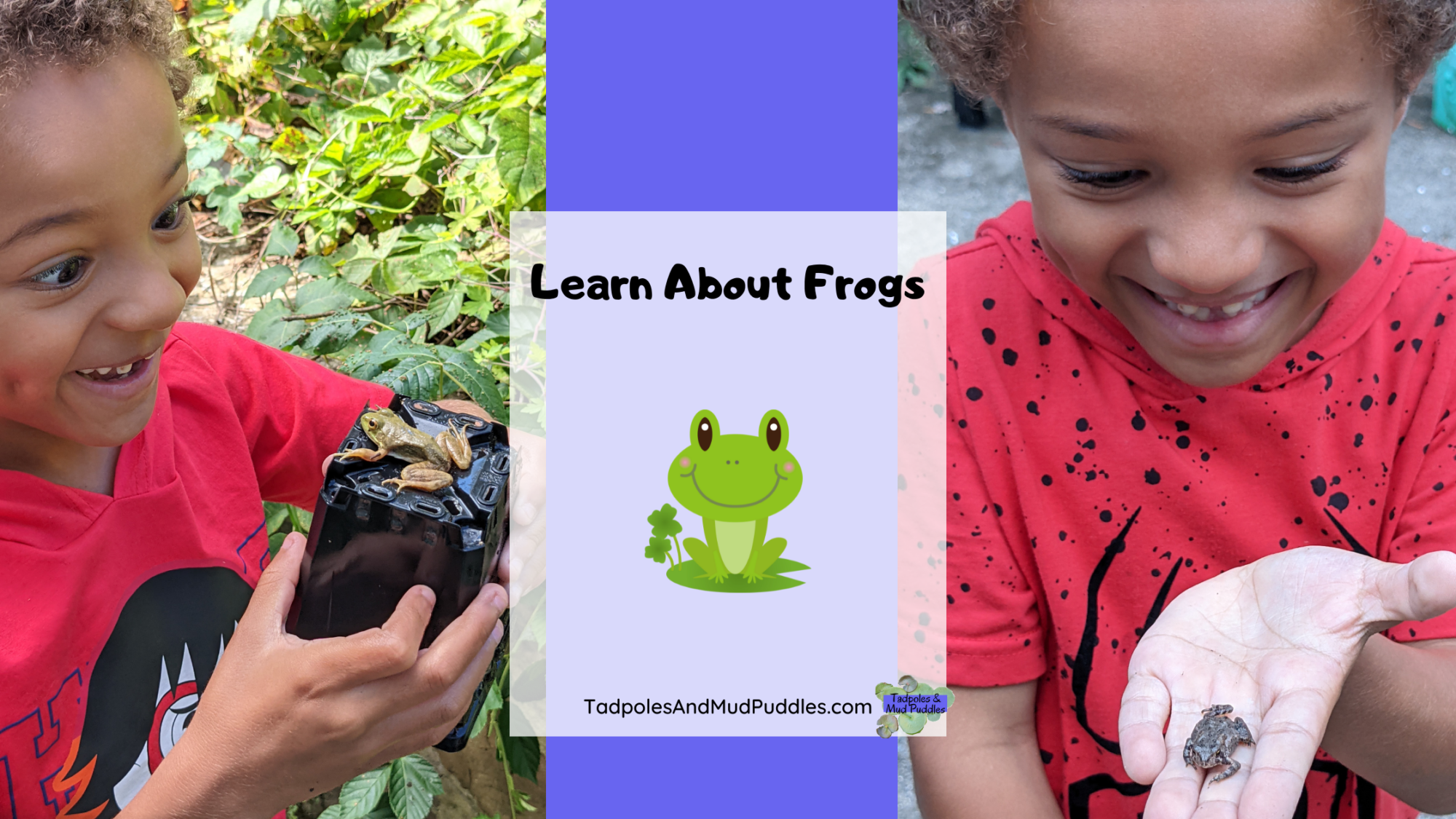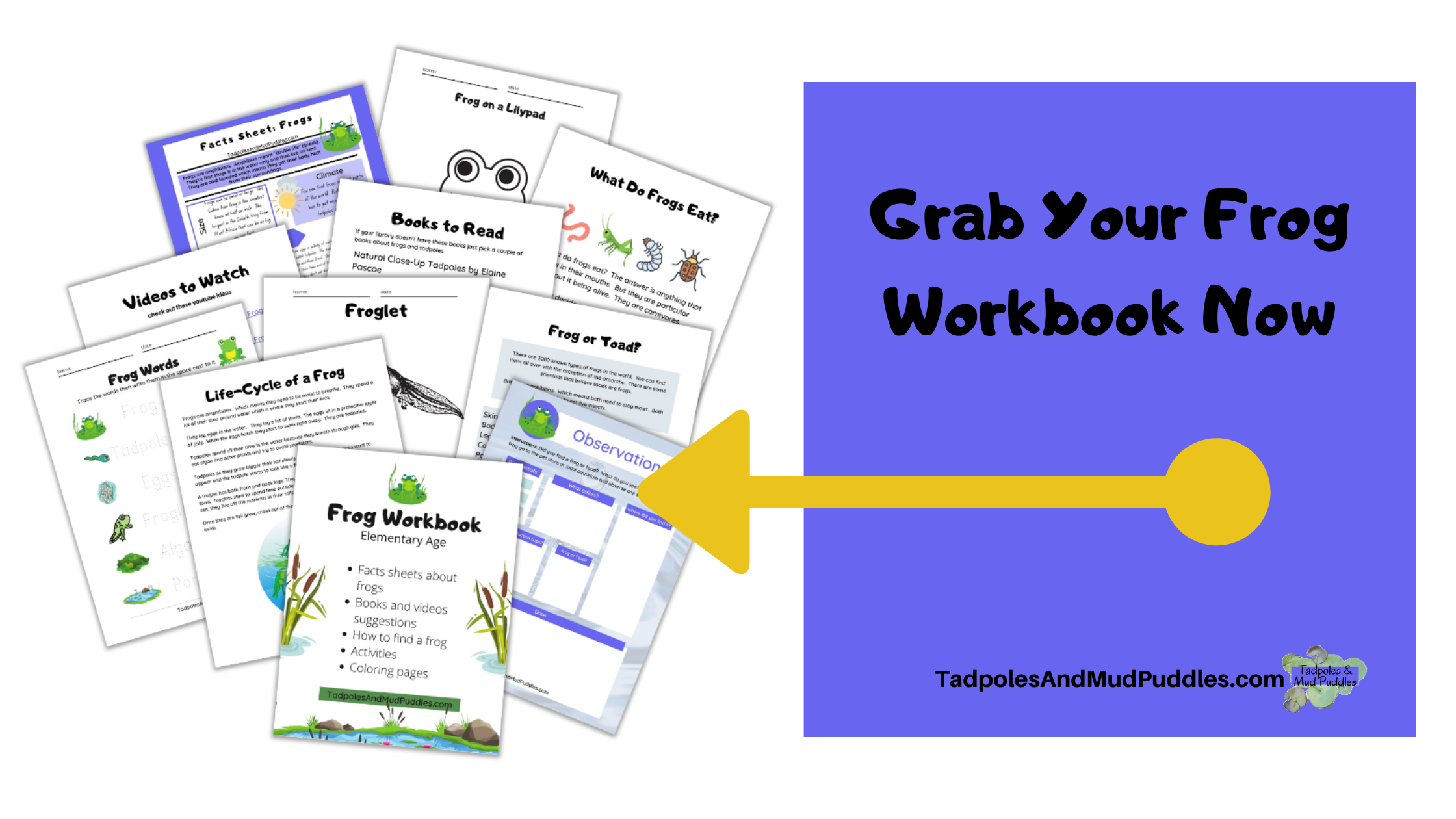As we were playing outside the other day we came across a little green creature. He sat very still hoping we wouldn’t notice him. He was close to our rain catchers for our garden. His breathing was very fast and his skin was smooth and slimy. When Aiden tried to catch him he hopped high and far. What did we see? We found a frog. We almost didn’t spot him. His green skin blended in with the grass and flowers and plants.
Aiden named him George. We spent several hours studying him and playing. Here’s what we learned.

Learning and Playing with a Frog contains affiliate links. If you make a purchase through these links I will receive a small commission at no extra cost to you. Feel free to read more here.
So, how do you catch a frog?
Aiden caught George on his own. Made his hands wet from our rain catcher and then scooped the frog up in his hands. He had to be gentle otherwise he would squish George. He dropped him once because he was so slimy. Once he figured it out George was captured.
Frogs are amphibians so they breathe through their skin. That means it’s best if their surroundings are moist. If you pick a frog up with your hands be sure that you don’t have any chemicals on them either. Sunscreen, lotion, and bug spray will be absorbed through their skin. It could make them sick or kill them.
You can also catch a frog with a net, flashlight, or cup.
You may need a long net to capture a frog. They jump pretty quickly so you may need the extra reach. You may also have the opportunity to catch some tadpoles if you go looking by a pond or other slow-moving body of water.
Frogs are active at night so if you use a flashlight to spot them, shine it at them to stop them and scoop them up.
If you use a cup be careful not to squish in the capturing process. It may make it easier to do than with just your hands. And you can add water afterward to keep your frog happy.
Remember that sliminess? It can irritate your skin so don’t touch your face or especially your eyes until you release the frog and wash your hands.
Related post: For the Boy Moms Who Don’t Like Bugs
What did you catch?

What’s the difference between a frog and a toad? Scientists are still arguing over the frog vs. toad. Some say that a toad is a frog since they are so similar.
Here are some of the easy ways to tell the difference:
| Frogs | Toads | |
| Skin | slimy | bumpy |
| Legs | long | short |
| Found | near water | in moist places |
| Shape | long and lean | short and squat |
What do frogs eat?
Frogs are carnivores. They love bugs, worms, and slugs. They will eat anything that fits in their mouths. If you find a small frog they will need live bugs, worms, or slugs that are small. If you find a large frog then they will eat large bugs, worms, or slugs. You can try and feed the frog you catch. Just remember they may not be hungry.
What eats a frog?
Frogs have a lot of preditors. That’s one of the reasons why they’re so hard to catch. They have to watch out for snakes, birds, and mammals like skunks, raccoons, and weasels. Even people like to eat frogs. Because so many creatures like to eat frogs, frogs hide and run when they see anything nearby.
What can you learn from a frog?
We love learning from things around us. We played with George for several hours before letting him go. We got a few books from the library too to learn more about frogs.
You can learn about frogs from books and videos but there’s nothing quite like examing a frog in your hands, watching him swim, and if you’re lucky getting a hungry frog that will show off their long tung.
If you’d like to do some more learning. Grab this unit study on frogs right now. Just click on the link.
Learn about Frogs
If you catch a frog you have an amazing learning opportunity. Remember to keep your hands clean and wet for the frog while you examine and observe. Be gentle. Get a book or two from the library and learn too.
Pin it




